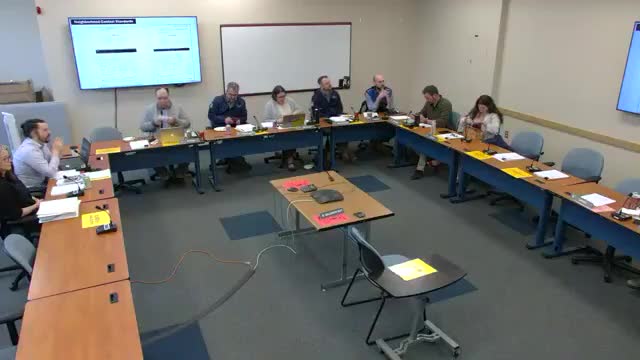Anchorage Assembly revises site access rules to improve vehicle and pedestrian safety
May 31, 2025 | Anchorage Municipality, Alaska
This article was created by AI summarizing key points discussed. AI makes mistakes, so for full details and context, please refer to the video of the full meeting. Please report any errors so we can fix them. Report an error »

In the heart of Anchorage's city hall, a pivotal discussion unfolded as local officials convened to address the complexities of parking and site access regulations. The meeting centered around the proposed amendments to Anchorage Municipal Code, specifically AO 2025-64, which aims to clarify and enhance the existing standards that govern vehicle access and parking in the city.
The backdrop of this conversation is rooted in a series of previous ordinances, notably AO 2022-80, which had introduced a range of parking and site access standards. However, as city planners and developers began to navigate these regulations, confusion arose. Stakeholders, including the Cook In Housing Authority, voiced concerns that the existing rules were overly complicated, hindering their development projects. This prompted a reevaluation of the regulations to ensure they were both practical and user-friendly.
The proposed amendments seek to untangle the web of regulations that had been consolidated in previous years. City officials emphasized the need to preserve essential standards while eliminating those that proved difficult to implement. A significant focus of the discussion was the delineation between public and private spaces, particularly in areas where vehicle access overlaps with pedestrian pathways. This lack of clarity has created safety concerns for both pedestrians and drivers, as the boundaries of where cars can operate remain ambiguous.
One of the key changes proposed in AO 2025-64 is the introduction of vertical separations for driveways. While the ordinance allows for substantial driveway widths—up to 28 feet—it mandates that beyond this width, some form of vertical separation must be established. This could take the form of bollards, trees, or other barriers, ensuring that not all curb space is monopolized by private driveways. This adjustment aims to protect public right-of-way and enhance safety for all users of the road.
Additionally, the amendments address practical concerns such as snow storage. With extensive driveways, there is often little room left for snow accumulation, which can obstruct access and create hazards. By incorporating vertical separations, the city can allocate space for snow storage and improve the overall functionality of the streetscape.
As the assembly moves forward with these proposed changes, the hope is to create a more navigable and safer environment for Anchorage residents. The discussions reflect a broader commitment to balancing development needs with public safety and accessibility, ensuring that the city can grow while maintaining a high quality of life for its inhabitants. The outcome of these amendments will be closely watched, as they hold the potential to reshape the urban landscape of Anchorage for years to come.
The backdrop of this conversation is rooted in a series of previous ordinances, notably AO 2022-80, which had introduced a range of parking and site access standards. However, as city planners and developers began to navigate these regulations, confusion arose. Stakeholders, including the Cook In Housing Authority, voiced concerns that the existing rules were overly complicated, hindering their development projects. This prompted a reevaluation of the regulations to ensure they were both practical and user-friendly.
The proposed amendments seek to untangle the web of regulations that had been consolidated in previous years. City officials emphasized the need to preserve essential standards while eliminating those that proved difficult to implement. A significant focus of the discussion was the delineation between public and private spaces, particularly in areas where vehicle access overlaps with pedestrian pathways. This lack of clarity has created safety concerns for both pedestrians and drivers, as the boundaries of where cars can operate remain ambiguous.
One of the key changes proposed in AO 2025-64 is the introduction of vertical separations for driveways. While the ordinance allows for substantial driveway widths—up to 28 feet—it mandates that beyond this width, some form of vertical separation must be established. This could take the form of bollards, trees, or other barriers, ensuring that not all curb space is monopolized by private driveways. This adjustment aims to protect public right-of-way and enhance safety for all users of the road.
Additionally, the amendments address practical concerns such as snow storage. With extensive driveways, there is often little room left for snow accumulation, which can obstruct access and create hazards. By incorporating vertical separations, the city can allocate space for snow storage and improve the overall functionality of the streetscape.
As the assembly moves forward with these proposed changes, the hope is to create a more navigable and safer environment for Anchorage residents. The discussions reflect a broader commitment to balancing development needs with public safety and accessibility, ensuring that the city can grow while maintaining a high quality of life for its inhabitants. The outcome of these amendments will be closely watched, as they hold the potential to reshape the urban landscape of Anchorage for years to come.
View full meeting
This article is based on a recent meeting—watch the full video and explore the complete transcript for deeper insights into the discussion.
View full meeting
